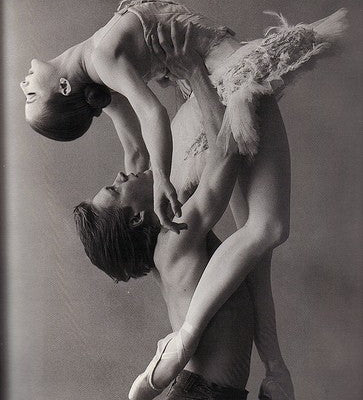Your Dance Attire is our priority * Appointments *
Your Dance Attire is our priority * Appointments *
Add description, images, menus and links to your mega menu
A column with no settings can be used as a spacer
Link to your collections, sales and even external links
Add up to five columns
Add description, images, menus and links to your mega menu
A column with no settings can be used as a spacer
Link to your collections, sales and even external links
Add up to five columns

Pointe Shoe Buying Mistakes to Avoid
August 30, 2019 4 min read
If your pointe shoe buying routine involves going online and clicking "reorder" on the shoes you've worn for years, it might be time to get a fresh, in-person assessment. Even a slightly different shoe can solve a host of issues—and help you avoid problems in the future. Find the best fit for your feet by avoiding these mistakes.
Collectively, teachers and doctors can agree on one thing: pointe work is NOT healthy for the human body. With that being true, neither is being tackled by a 200-pound man on astroturf, regardless people do it. Dancers do it for the love the art, the strides towards perfection, and the ability to conquer physics. Ballet would not be ballet without pointe work; it is the ultimate goal of a female dancer and some male dancers. So, how does a 6-year-old girl go from dancing in her living room with winged butterfly costumes to defying gravity on the largest stages around the world? Hard work, determination and sacrifice. To dance on en pointe or on pointe, you have to be ready both physically and mentally. The road to pointe work is the first step in the long journey it takes to become a ballerina.The demand of pointe is not only physically straining, but it is also financially straining. They are probably one of the most expensive pair of shoes you will every buy, that will last at most two weeks. And for those blessed with strong feet and beautiful arches, maybe two days… And for those of you who dance en pointe constantly… Maybe a class or two? The pointe shoe is an oxymoron, as it doesn’t last long due to sweat and the breaking down of the raw materials. (Unless you wear Gaynors… These shoes last longer, but there is a huge debate about that…) As delicate as they are, and as delicate it creates the aesthetic for ballet… well, they are also extremely strong.
Mistake: Pushing Through Pain
"The culture of ballet can teach you to push through being uncomfortable," says Josephine Lee, founder of The Pointe Shop in Santa Ana, California, "but a lot of times, shoe-related discomfort is easy to fix." If you're plagued by bruised toenails, blisters or corns, those may be signs you need to go in for a fitting. A professional shoe fitter would likely be able to pinpoint whether your problem lies with width, length or another aspect.
Mistake: Ignoring Injuries
A better shoe might also be the key to performing with less pain. Dr. Thomas M. Novella, a podiatrist who's worked with dancers from New York City Ballet, American Ballet Theatre and other companies, cites several injuries that can be caused or worsened by dancing in the wrong shoes. For instance, "a too-short vamp, where 'toe cleavage' is visible, will fail to support the top of the foot on pointe," he says. One possible end result: stress fractures at the base of the metatarsals. Meanwhile, a too-high vamp can lead to jamming injuries in the ankle, as you push to get over the platform.
Mistake: Buying The Wrong Size
Adults' feet can fluctuate in size—and not just from one year to the next. Novella notes that feet can change within a single season, expanding during warmer weather or periods of intense activity, and shrinking again when it's cold or the activity level decreases. He advises setting aside shoes for both scenarios.
Another common issue is feet that are two different sizes. "If you're getting toenail bruises, blood blisters or other signs of compression, but only on one foot, have someone check each foot's size," Novella says. The solution might be to buy two pairs at a time—one for the right foot and one for the left.
Mistake: Fearing What's New
Even if you trust your current style, it can be worthwhile to look into recent releases. Each year, the industry announces innovations in materials, construction and design. "There might be technology inserted into a shoe that could really help you," Lee says.
Mistake: Following A Trend
The hottest new shoe might look great on someone else but be entirely wrong for you. "We fit to technique as well as to foot shape," Lee says. A knowledgeable fitter will be able to guide you toward—or away from—the latest trends, keeping your specific needs in mind.
Mistake: Changing Everything
Remember, you don't have to swap out every shoe element at once.
"If you've learned that a certain platform width, vamp length or shank firmness works, but you discover that you need a half-length longer, only change the length," says Novella. That way, the new shoe will still feel somewhat familiar.
Mistake: Giving Up Immediately
Be prepared to take time to acclimate. "You might not enjoy the first month in the correct shoe," Lee warns. "When dancers are comfortable in the wrong shoes, changing can feel 'wrong' before it feels right." Some discomfort early on doesn't necessarily mean you've made a bad choice; your body simply has to adjust.
Subscribe
Sign up to get the latest on sales, new releases and more …
